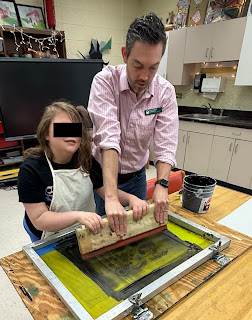Jack jumped over a candlestick. It wasn't a candle, it was the thing that holds the candle: a candlestick. It wasn't until about 15 years ago, that I realized, like everyone around me, that I was calling tapered candles, candlesticks, and calling candlesticks candlestick holders.

No matter what you call it, it's a fun ceramic project for people learning to work on the potter's wheel. I'd never made them before and thought I should l get a lot of practice in before teaching my students as a possible project or fundraiser. It's not to hard to make a cone with a little cup on top. There's a little trick in keeping that cup centered as you squeeze the rest of the clay up into a stick form or, if you want to be fancy, create some bulbs along the way, but it's doable. For me getting them all the same size took a little effort. I was using a wide handle to measure them, but the porcelein didn't strink as much as I thought and the ended up being a little too big. This wasn't as problematic as the fact that all of them blew up in the kiln.

Back to the drawing board. I realized that I needed to hallow out the base, even though none of the tutorial videos I watched, mentioned this step. Once the sticks were leather hard, I tried to trim them on the wheel, but they were far to tall and wobbly for this to work. I ended up just holding it with my hand and using carving tools to hollow out the underside, so that the walls were about the same size and gradually lead into the thinner part of the stick.
Success! Every one in the second batch survived the firing, and, since I used the actual candle to measure the size of the cup at the top of the candlestick, they fit. I'm glad I didn't wait to do this with my student.









































